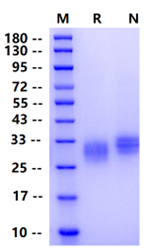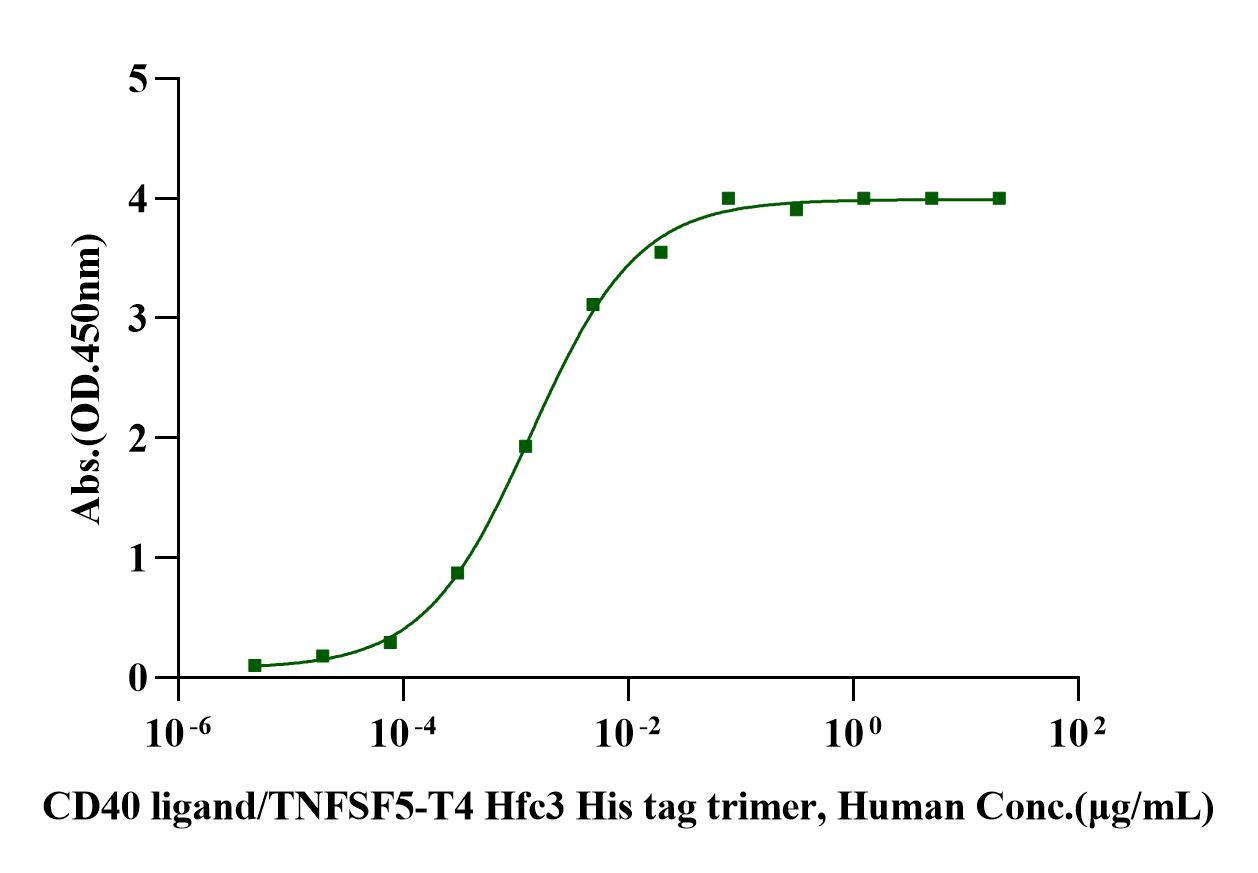Glu21-Arg193, with C-terminal Avi&His Tag EPPTACREKQYLINSQCCSLCQPGQKLVSDCTEFTETECLPCGESEFLDTWNRETHCHQHKYCDPNLGLRVQQKGTSETDTICTCEEGWHCTSEACESCVLHRSCSPGFGVKQIATGVSDTICEPCPVGFFSNVSSAFEKCHPWTSCETKDLVVQQAGTNKTDVVCGPQDRLRGGGSGLNDIFEAQKIEWHEHHHHHHHH
27-33kDa
PBS, pH7.4
Reconstitute at 0.1-1 mg/ml according to the size in ultrapure water after rapid centrifugation.
· 12 months from date of receipt, lyophilized powder stored at -20 to -80℃.
· 3 months, -20 to -80℃ under sterile conditions after reconstitution.
· 1 week, 2 to 8℃ under sterile conditions after reconstitution.
· Please avoid repeated freeze-thaw cycles.
1. TingTing Tang, Xiang Cheng, Billy Truong, LiZhe Sun, XiaoFeng Yang & Hong Wang: Molecular basis and therapeutic implications of CD40/CD40L immune checkpoint, Pharmacology & Therapeutics Volume 219, March 2021, 107709.
CD40 is also known as TNFRSF5, Bp50, CDW40, MGC9013, TNFRSF5 and p50, is a member of the TNF receptor superfamily which are single transmembrane-spanning glycoproteins, and plays an essential role in mediating a broad variety of immune and inflammatory responses including T cell-dependent immunoglobulin class switching, memory B cell development, and germinal center formation. CD40 is a costimulatory protein found on antigen presenting cells and is required for their activation. The binding of CD154 (CD40L) on TH cells to CD40 activates antigen presenting cells and induces a variety of downstream effects. CD40 contains 4 cysteine-rich repeats in the extracellular domain, and is expressed in B cells, dendritic cells, macrophages, endothelial cells, and several tumor cell lines. Interaction of CD40 with its ligand, CD40L, leads to aggregation of CD40 molecules, which in turn interact with cytoplasmic components to initiate signaling pathways. Early studies on the CD40-CD40L system revealed its role in humoral immunity. Both CD40 and CD40 L have a membrane form and a soluble form generated by proteolytic cleavage or alternative splicing. CD40 and CD40L are widely expressed in various types of cells, among which B cells and myeloid cells constitutively express high levels of CD40, and T cells and platelets express high levels of CD40L upon activation. CD40L self-assembles into functional trimers which induces CD40 trimerization and downstream signaling. CD40/CD40L immune checkpoint leads to activation of both innate and adaptive immune cells via two-way signaling. CD40/CD40L interaction also participates in regulating thrombosis, tissue inflammation, hematopoiesis and tumor cell fate. The mechanisms of benefits include immune cell activation and tumor cell lysis/apoptosis in malignancies, or immune cell inactivation in autoimmune diseases and allograft rejection.

1μg (R: reducing conditions, N: non-reducing conditions).

Immobilized Biotinylated CD40 Avi&His Tag Protein, Human (Cat. No. UA010540) at 2 μg/mL on Streptavidin precoated (0.5μg/well) plate, can bind CD40 ligand/TNFSF5-T4 Hfc3 His tag trimer, Human with EC50 of 1.16-1.59ng/ml.